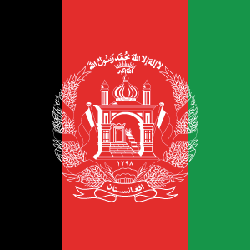Why do people hate city pigeons?
Feral pigeons were made by humans. Now we detest them. How did things go so wrong?
*This article contains details and images that some readers may find distressing.
I'm perched on the edge of a paving slab, watching as Lisa Davies produces a baby-pink manicure set from her rucksack, and opens it up on her lap. Inside is an assortment of tweezers and nail files, as well as a mysterious spoon that I've since learned is an ear pick. Like a surgeon arranging her instruments before an operation, she runs her hands over them, and selects a pair of nail scissors.
It's a hot, sticky Sunday afternoon at St Anne's churchyard, in London's Soho district. Groups of teenagers are lounging on the grass, while shirtless men play table tennis in the background. But further into the park, a less typical summer scene is unfolding. A group of volunteers is clustered around a flock of 50 pigeons, watching their feet intently. One is limping.
The young pigeon's feet are swollen, bound up in a tangle of long, dark human hairs and cotton threads – the detritus of city life, picked up over many months of walking alongside pedestrians. This is a classic case of "string foot", and without human help, it will gradually cut off the blood supply to her toes and feet, until they fall off altogether. But she is one of the lucky ones. With impressive confidence and precision, Davies – a part-time student studying conservation education at the University of Chester, who has been volunteering with pigeons for the last 18 months – thrusts her arms forward and gently plucks the bird from the crowd. She secures it under her t-shirt which, fittingly, features a pigeon print, and pulls out a dinosaur-like foot. It takes around half an hour of careful tugging and snipping before the hairs have been removed, and the bird can be released in a flurry of feathers.
Davies is part of the London Pigeon String Foot and Rescue group, an organisation that aims to help the city's approximately three million feral pigeons. The volunteers meet up every Sunday, all year long, to tend to the mangled feet of pigeons across the city. As I ponder this noble sacrifice, I'm snapped out of my reverie by a commotion – on the street below, a man is chasing a pigeon "for a joke", sending a tempest of panicked birds into the air.
City pigeons are among the most detested animals on the planet. After a series of misunderstandings going back decades, they've become widely regarded as dirty, disease-addled and akin to "flying rats". Horrific injuries are often accepted as a consequence of their desperate, downtrodden existence, and their penchant for life alongside humans is sometimes resented as annoying or unhygienic. But it hasn't always been this way. For millennia, pigeons were viewed with respect and even reverence. One Mughal emperor was such a big fan, he carted around 20,000 of the birds wherever he went, while the Victorian scientist Charles Darwin – who at one point had a flock of 90 – was reportedly obsessed with them. How did our relationship with these creatures go so wrong?
Along the rocky coastline in the Outer Hebrides, perched on top of cliffs and abandoned buildings, are familiar faces: grey heads with large orange eyes, peeking down at passersby. They belong to rock doves, Columba livia. But though these birds look almost identical to the feral pigeons found in cities, they are not the same. This remote Scottish outpost has one of the wildest populations of rock doves on the planet – it's one of the last places where they have clung onto a substantial proportion of their original, ancestral genetics.
Feral pigeons, on the other hand, are an entirely different case. They belong to the subspecies Columba livia domestica, andare almost exclusively descended from domesticated birds, which have provided a steady trickle of escapees to hang around human settlements over the last 4,000 years. There are subtle variations in the ancestry of populations from one region to another, depending on the specific breeds traditionally kept in that part of the world – but at some point, the family tree of the vast majority of feral pigeons would lead back to birds bred by humans.
As a result of this lineage, feral pigeons are extraordinarily trusting of humans, and drawn to environments with a high density of people.
Paul Themis, known among the wildlife rescue community as Paul Leous Pigeon, is a pigeon rehabilitator from London. He has been helping........
© BBC






















 Toi Staff
Toi Staff Belen Fernandez
Belen Fernandez Andrew Mitrovica
Andrew Mitrovica Gideon Levy
Gideon Levy Tarik Cyril Amar
Tarik Cyril Amar Rachel Marsden
Rachel Marsden Warren J. Blumenfeld
Warren J. Blumenfeld Dr Ramzy Baroud
Dr Ramzy Baroud Patrick Gathara
Patrick Gathara Brad Glosserman
Brad Glosserman
